
BUSINESS
The Cooper Companies, Inc., together with its subsidiaries, develops, manufactures, and markets contact lens wearers. The company operates in two segments, CooperVision and CooperSurgical. The CooperVision segment offers spherical lense, including lenses that correct near and farsightedness; and toric and multifocal lenses comprising lenses correcting vision challenges, such as astigmatism, presbyopia, myopia, ocular dryness and eye fatigues in the Americas, Europe, Middle East, Africa, and Asia Pacific. The CooperSurgical segment focuses on family and women’s health care, which provides medical devices, fertility, genomics, diagnostics, and contraception to health care professionals and patients worldwide.

INVESTMENT RATING
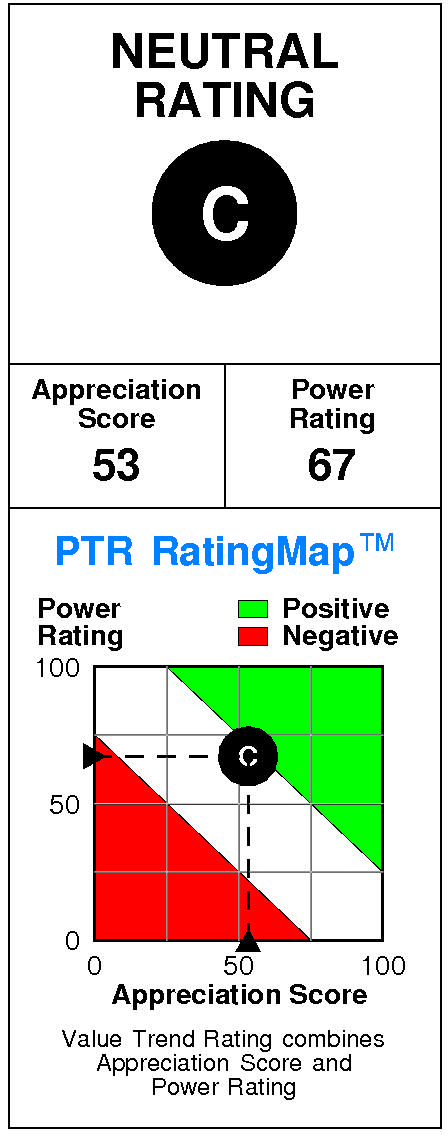
With future capital returns forecasted to exceed the cost of capital, COO is expected to continue to be a Value Builder.
Cooper has a current Value Trend Rating of C (High Neutral).
This rating combines consistent signals from two proprietary PTR measures of a stock’s attractiveness. Cooper has a neutral Appreciation Score of 53 and a slightly positive Power Rating of 67, triggering the High Neutral Value Trend Rating.
Cooper’s stock is selling well below targeted value. The current stock price of $100.82 compares to targeted value 12 months forward of $140.
This neutral appreciation potential results in an appreciation score of 53 (47% of the universe has greater appreciation potential.)
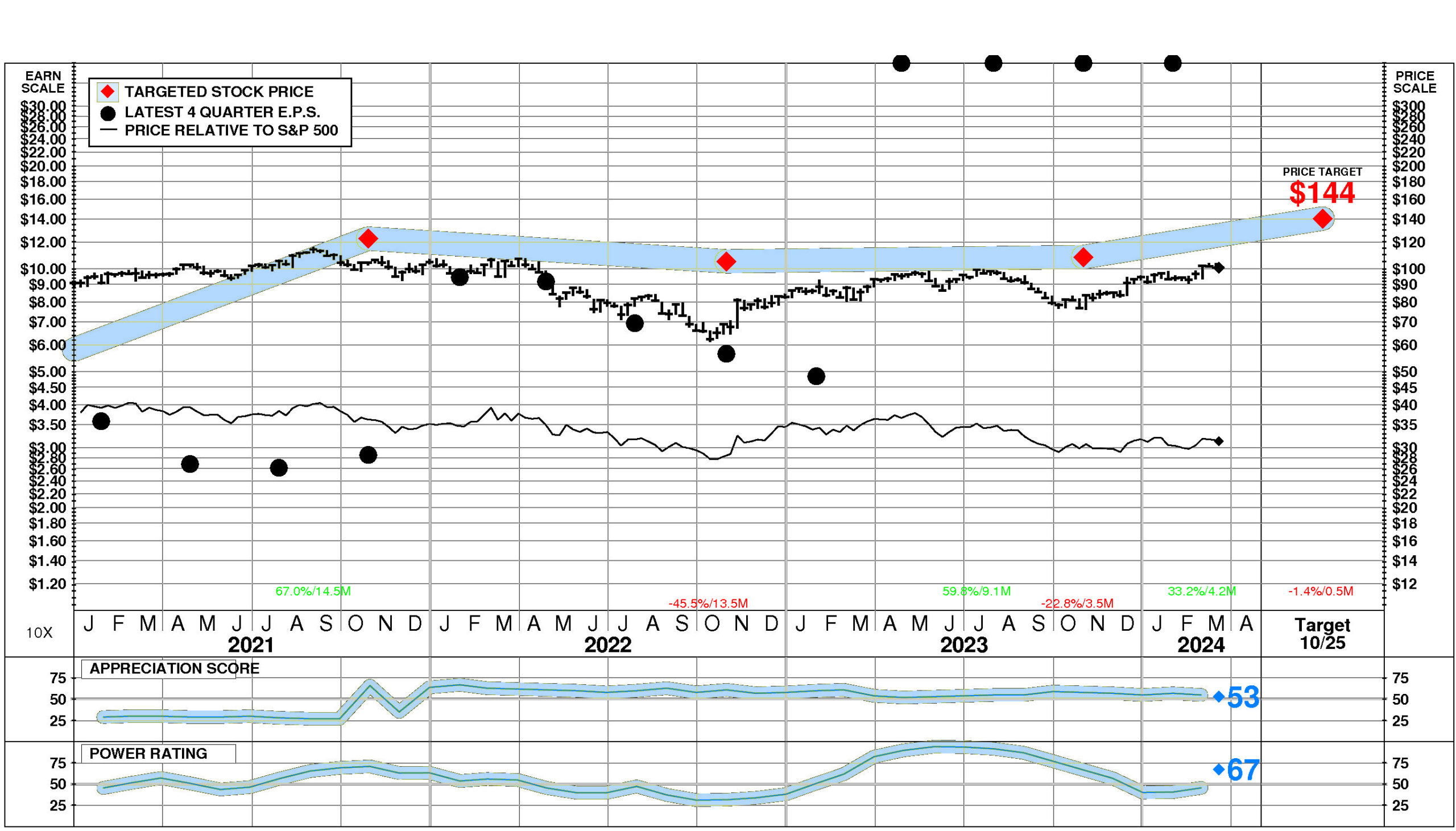
Cooper has a Power Rating of 67. (This slightly positive Power Rating indicates that Cooper has a better chance of achieving attractive investment performance over the near to intermediate term than all but 33% of companies in the universe.)
Factors contributing to this slightly positive Power Rating include: the recent trend in Cooper’s earnings estimates has been favorable; recent price action has been neutral; and the Ophthalmic Goods comparison group is currently in a modestly favorable position.
INVESTMENT PROFILE
Cooper’s financial strength is average. Financial strength rating is 57.
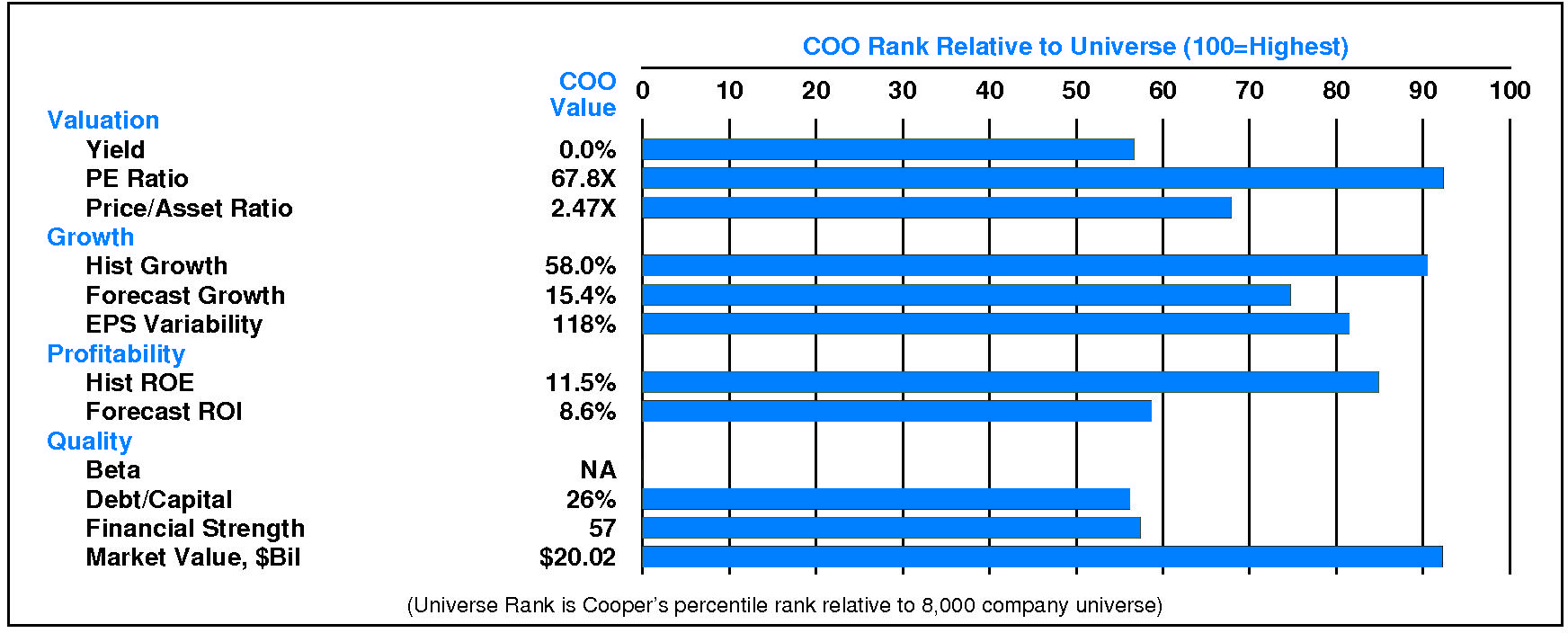
Relative to the S&P 500 Composite, Cooper Cos Inc has both Growth and Value characteristics; its appeal is likely to be to Capital Gain-oriented investors; the perception is that COO is normal risk. Relative weaknesses include: low forecasted profitability, and high earnings variability. Cooper’s valuation is high: low dividend yield, high P/E ratio, and moderate price/book ratio. COO has low market capitalization.
CURRENT SIGNALS
Cooper’s current operations are eroding. Return on equity is falling, reflecting: declining pretax margin; falling tax keep rate; and falling leverage.
Cooper’s current technical position is very strong. The stock price is in a 4.2 month up move. The stock has appreciated 33.2% from its prior low. The stock price is above its 200 day moving average which is in an uptrend.
ALERTS
The Cooper Cos Inc (NASDAQ: COO). Marginal positive changes in fundamentals have recently occurred: significant quarterly earnings acceleration occurred.
The stock is currently rated C.
The Cooper Cos Inc (NASDAQ: COO) stock rose slightly by 0.1% on 3/18/24. The stock closed at $100.82. However, trading volume in this advance was below average at 67% of normal. The stock has performed in line with the market over the last nine months and has declined -0.7% during the last week.
CASH FLOW
In 2023, Cooper experienced a significant decline in cash of -$18 million (-13%). Sources of cash were lower than uses. Cash generated from 2023 EBITDA totaled +$1,032 million. Non-operating uses consumed -$146 million (-14% of EBITDA). Cash taxes consumed -$167 million (-16% of EBITDA). Re-investment in the business amounted to -$532 million (-52% of EBITDA). On a net basis, debt investors received -$287 million (-28% of EBITDA) while equity investors contributed +$82 million (+8% of EBITDA).
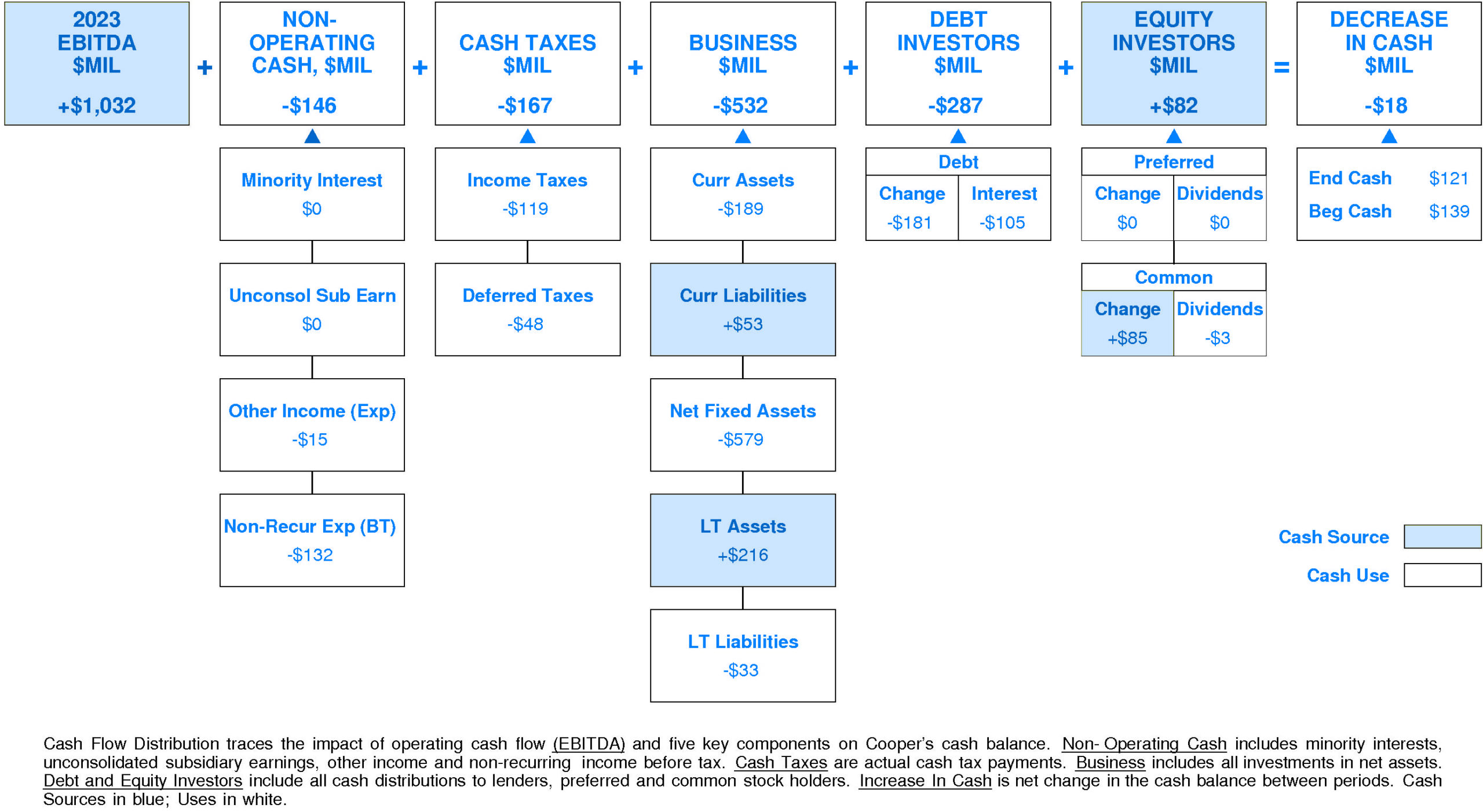
Cooper’s Non-operating Income, %EBITDA has exhibited a volatile overall uptrend over the period. This improvement was accompanied by stability for the Cooper Peer Group. In most years, Cooper was in the third quartile and lower quartile. Currently, Cooper is lower quartile at -14% of EBITDA (-$146 million).
Cooper’s Cash Taxes, %EBITDA enjoyed a volatile overall uptrend over the period. This improvement was accompanied by stability for the Cooper Peer Group. (Since 2021 Cash Taxes, %EBITDA has experienced a very sharp decline.) In most years, Cooper was in the top quartile and second quartile. Currently, Cooper is substantially below median at -16% of EBITDA (-$167 million).
Cooper’s Business Re-investment, %EBITDA has suffered a volatile overall downtrend over the period. This downtrend was accompanied by an opposite trend for the Cooper Peer Group. (Since 2021 Business Re-investment, %EBITDA has experienced a very sharp recovery.) In most years, Cooper was in the second quartile and lower quartile. Currently, Cooper is slightly above median at -52% of EBITDA (-$532 million).
Cooper’s Debt Investors, %EBITDA has experienced a volatile overall downtrend over the period. This downtrend was accompanied by stability for the Cooper Peer Group. In most years, Cooper was in the top quartile and lower quartile. Currently, Cooper is lower quartile at -28% of EBITDA (-$287 million).
Cooper’s Equity Investors, %EBITDA has enjoyed a volatile overall uptrend over the period. This improvement was accompanied by stability for the Cooper Peer Group. In most years, Cooper was in the second quartile and lower quartile. Currently, Cooper is above median at +8% of EBITDA (+$82 million).
Cooper’s Change in Cash, %EBITDA has exhibited little to no overall change over the period. This stability was accompanied by a downtrend for the Cooper Peer Group. In most years, Cooper was in the second quartile and lower quartile. Currently, Cooper is slightly above median at -2% of EBITDA (-$18 million).

Cooper’s Cash, %Revenue has exhibited little to no overall change over the period. This stability was accompanied by an uptrend for the Cooper Peer Group. In most years, Cooper was in the lower quartile. Currently, Cooper is lower quartile at +3%.
PROFITABILITY
Cooper’s return on equity has eroded very significantly since 2014. The current level of 3.8% is at the low for the period and is -64.0% from the high.
This very significant erosion was due to very strong negative trend in pretax operating return and little change in non-operating factors.
The productivity of Cooper’s assets declined over the full period 2014-2024: asset turnover has suffered a strong overall downtrend.
Cooper’s pretax margin experienced a volatile overall downtrend over the period 2014-2024.
Non-operating factors (income taxes and financial leverage) had little influence on return on equity.
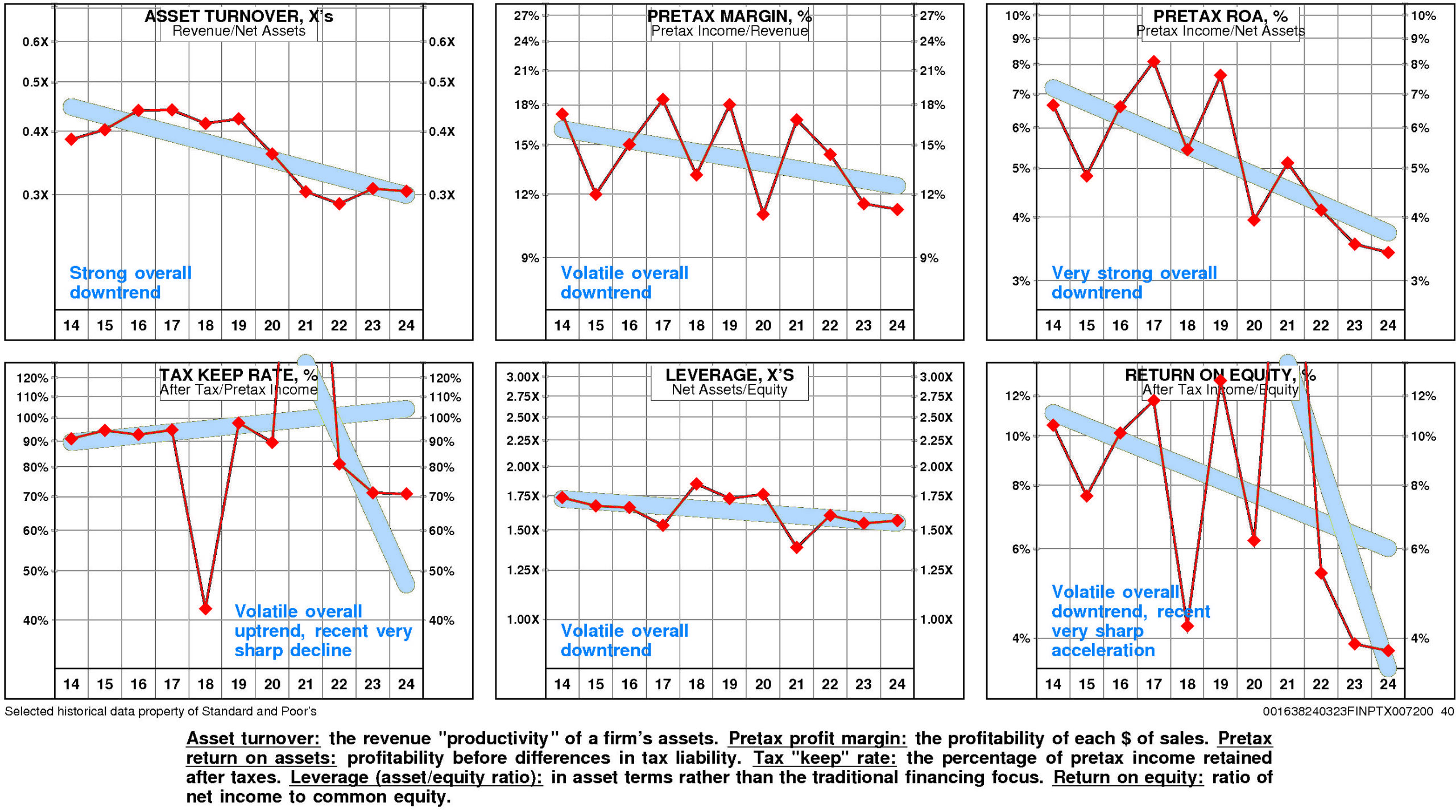
Cooper’s return on equity is at the lower quartile (3.8%) for the four quarters ended January, 2024.
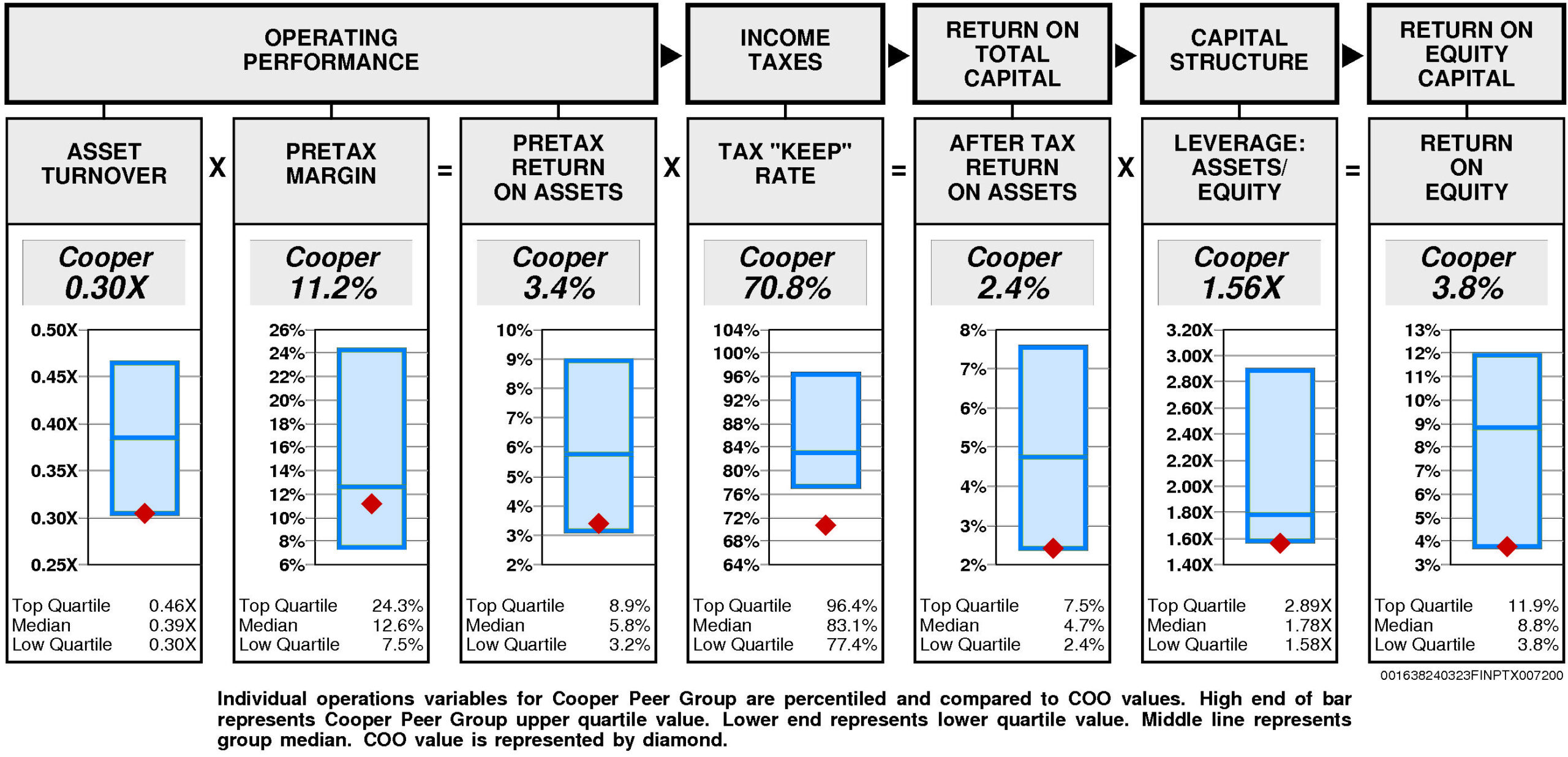
Operating performance (pretax return on assets) is substantially below median (3.4%) reflecting asset turnover that is at the lower quartile (0.30X) and below median pretax margin (11.2%).
Tax “keep” rate (income tax management) is lower quartile (70.8%) resulting in after tax return on assets that is at the lower quartile.
Financial leverage (leverage) is at the lower quartile (1.56X).
GROWTH RATES
There are no significant differences between Cooper’s longer term growth and growth in recent years.
Cooper’s historical income statement growth and balance sheet growth have diverged. Revenue growth has paralleled asset growth; earnings growth has fallen short of equity growth.
Annual revenue growth has been 15.0% per year.
Total asset growth has been 19.7% per year.
Annual E.P.S. growth has been 11.1% per year.
Equity growth has been 21.0% per year.
Cooper’s consensus growth rate forecast (average of Wall Street analysts) is 15.4% — in line with the average of the historical growth measures.
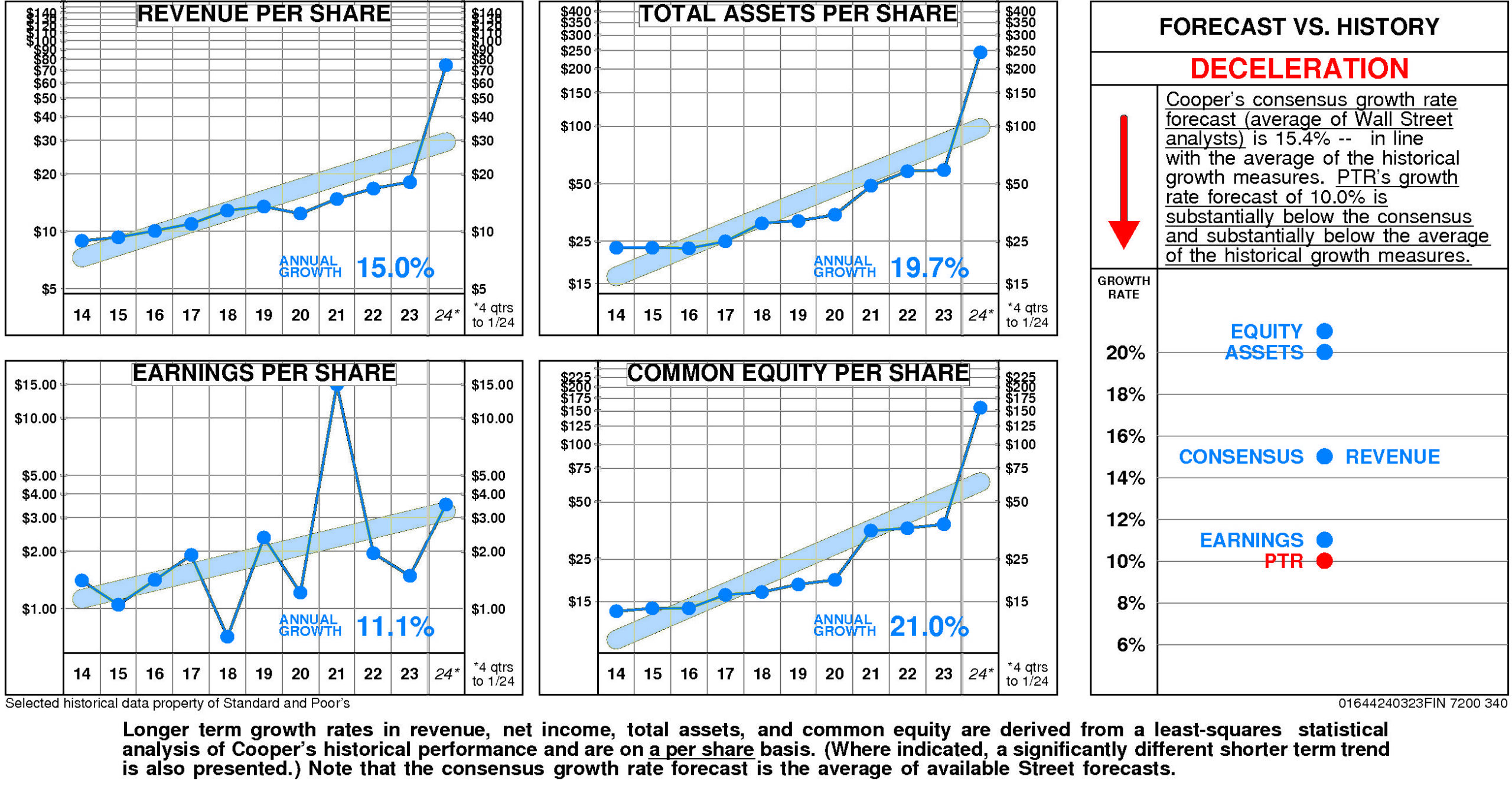
Relative to the Cooper Peer Group, Cooper’s historical growth measures are generally top quartile. Revenue growth (15.0%) has been upper quartile. Total asset growth (19.7%) has been upper quartile. Equity growth (21.0%) has been upper quartile. E.P.S. growth (11.1%) has been at median.
Consistent with this pattern, consensus growth forecast (15.4%) is also substantially above median.

PRICE HISTORY
Over the full time period, Cooper’s stock price performance has been good. Between May, 2013 and March, 2024, Cooper’s stock price rose +257%; relative to the market, this was a +13% gain. Significant price move during the period: 1) January, 2016 – January, 2020: +164%.
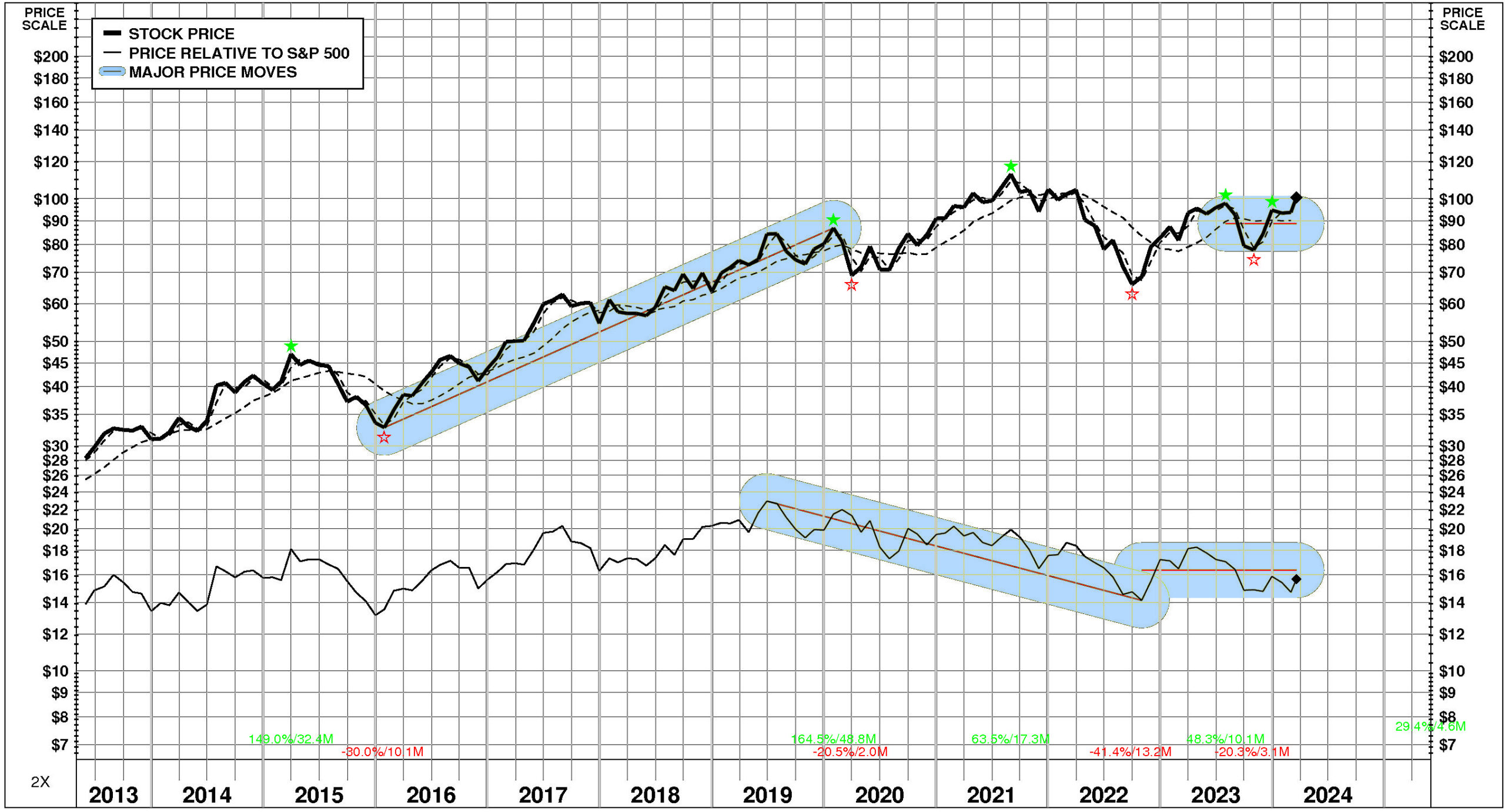
TOTAL INVESTMENT RETURNS
Current annual total return performance of 14.5% is slightly above median relative to the S&P 500 Composite.
In addition to being slightly above median relative to S&P 500 Composite, current annual total return performance through February, 2024 of 14.5% is below median relative to Cooper Cos Inc (The) Peer Group.
Current 5-year total return performance of 5.6% is below median relative to the S&P 500 Composite.
Through February, 2024, with below median current 5-year total return of 5.6% relative to S&P 500 Composite, Cooper’s total return performance is below median relative to Cooper Cos Inc (The) Peer Group.
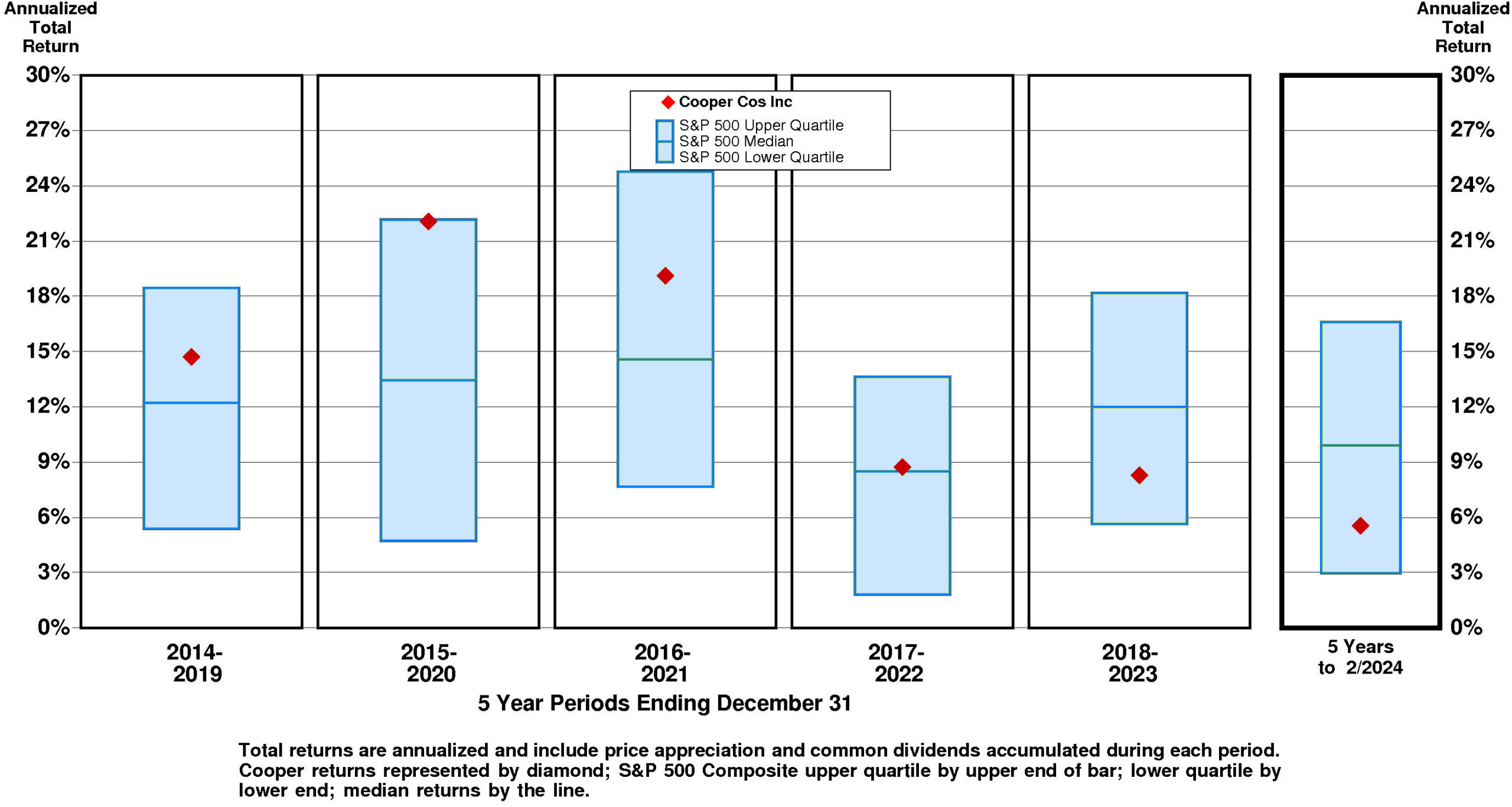
VALUATION BENCHMARKS
Relative to S&P 500 Composite, COO’s overall valuation is high. The highest factor, the price/earnings ratio, is upper quartile. Ratio of enterprise value/earnings before interest and taxes is upper quartile. Ratio of enterprise value/revenue is at the upper quartile. Ratio of enterprise value/assets is slightly above median. The lowest factor, the price/equity ratio, is below median.
Relative to Cooper Peer Group, COO’s overall valuation is normal. The highest factor, the price/earnings ratio, is near the upper quartile. Ratio of enterprise value/revenue is slightly above median. Ratio of enterprise value/earnings before interest and taxes is at median. Ratio of enterprise value/assets is at median. The lowest factor, the price/equity ratio, is slightly below median.
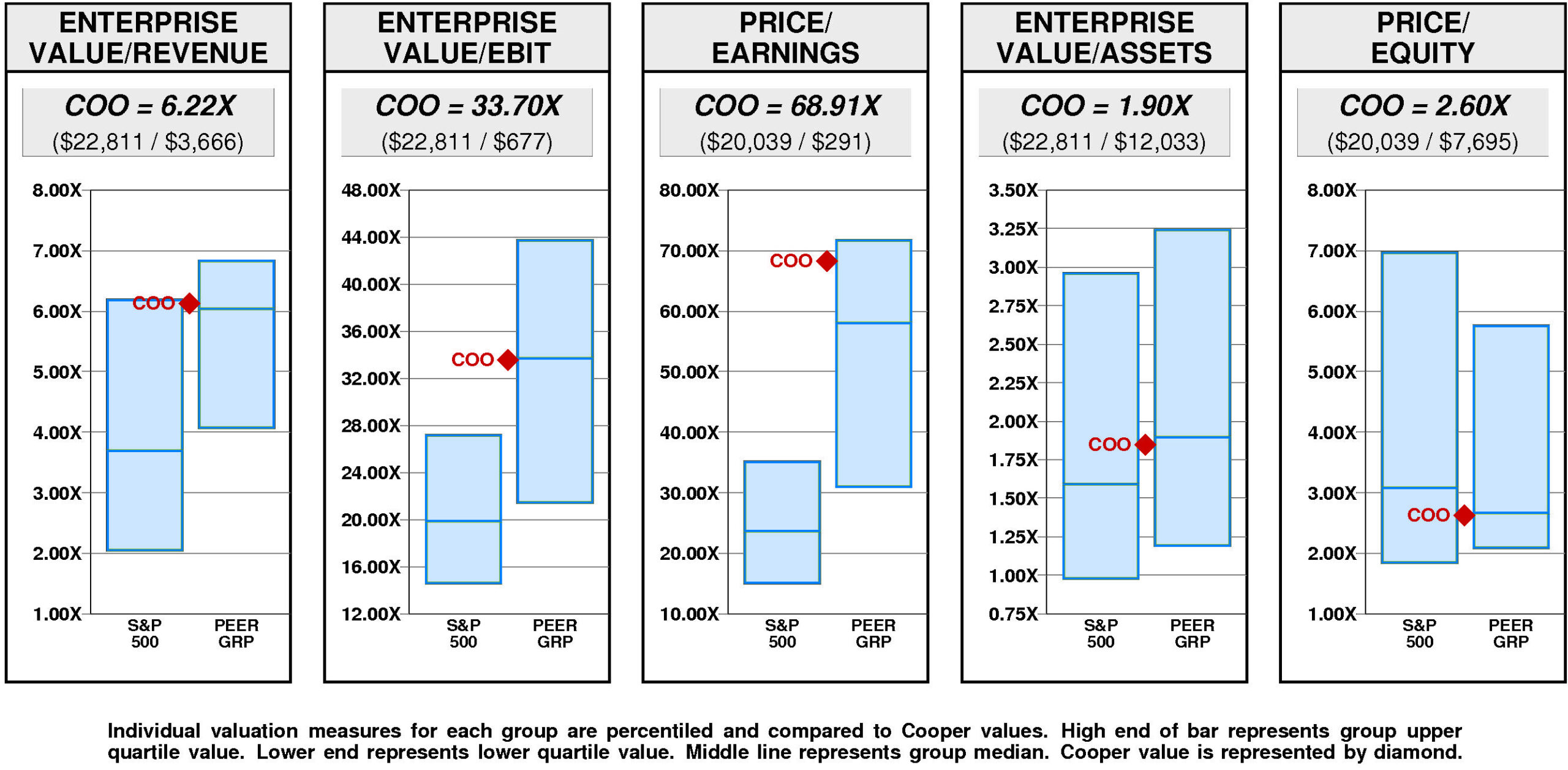
Cooper has a minor value gap compared to the median. For COO to achieve median valuation, its current ratio of enterprise value/revenue would have to fall from the current level of 6.22X to 6.04X. If COO’s ratio of enterprise value/revenue were to fall to 6.04X, its stock price would be lower by $-3 to $97.
For COO to achieve upper quartile valuation relative to the Cooper Peer Group, its current ratio of enterprise value/revenue would have to rise from the current level of 6.22X to 6.83X. If COO’s ratio of enterprise value/revenue were to rise to 6.83X, its stock price would increase by $11 from the current level of $101.
VALUE TARGETS
With future capital returns forecasted to exceed the cost of capital, COO is expected to continue to be a Value Builder.
Cooper’s current Price Target of $144 represents a +43% change from the current price of $100.82.
This neutral appreciation potential results in an appreciation score of 53 (47% of the universe has greater appreciation potential.)
Reinforcing this neutral Appreciation Score of 53, the moderately high Power Rating of 67 contributes to an Value Trend Rating of C.
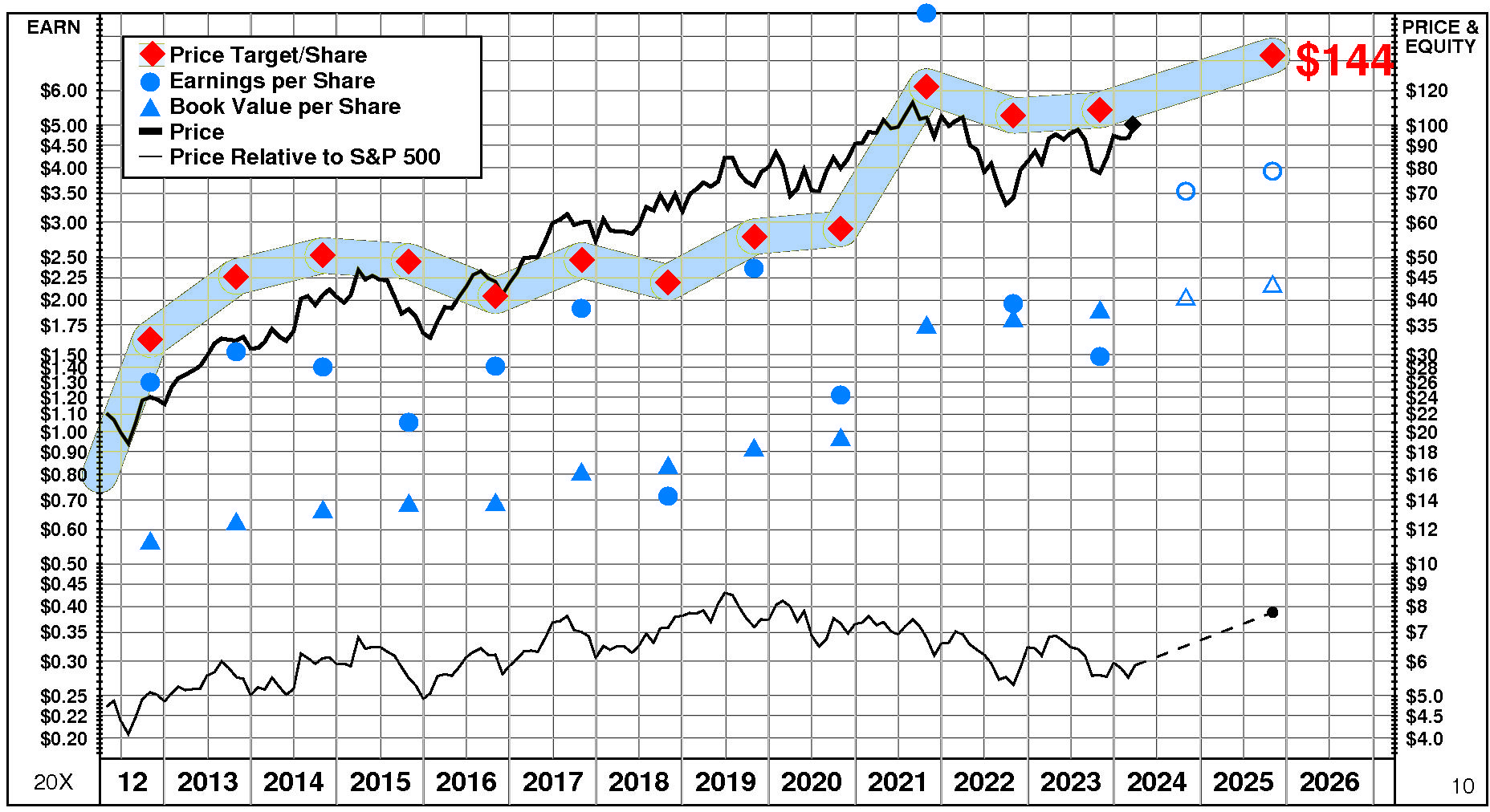
Cooper’s current Price Target is $144 (+33% from the 2023 Target of $108 and +43% from the 03/18/24 price of $100.82). This dramatic rise in the Target is the result of a +17% increase in the equity base and a +14% increase in the price/equity multiple. The forecasted decline in growth has a very large negative impact on the price/equity multiple and the forecasted increase in cost of equity has a large negative impact as well. More than offsetting these Drivers, the forecasted increase in return on equity has a very large positive impact.
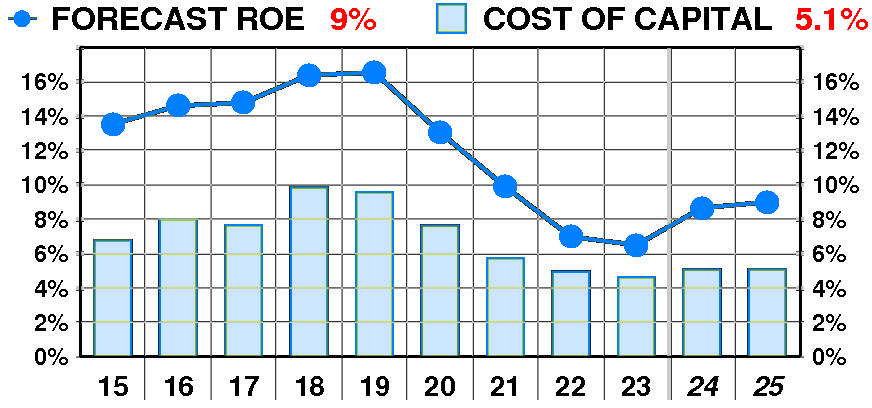

PTR’s return on equity forecast is 9.0% — slightly above our recent forecasts. Forecasted return on equity suffered a dramatic, variable decline between 2015 and 2023. The current forecast is well below the 2019 peak of 17%.
PTR’s growth forecast is 10.0% — below our recent forecasts. Forecasted growth enjoyed a dramatic, variable increase between 2015 and 2023. The current forecast is above the 2017 low of 6%.
PTR’s cost of equity forecast is 5.1% — in line with recent levels. Forecasted cost of equity enjoyed a dramatic, erratic decline between 2015 and 2023. The current forecast is below the 2018 peak of 9.8%.
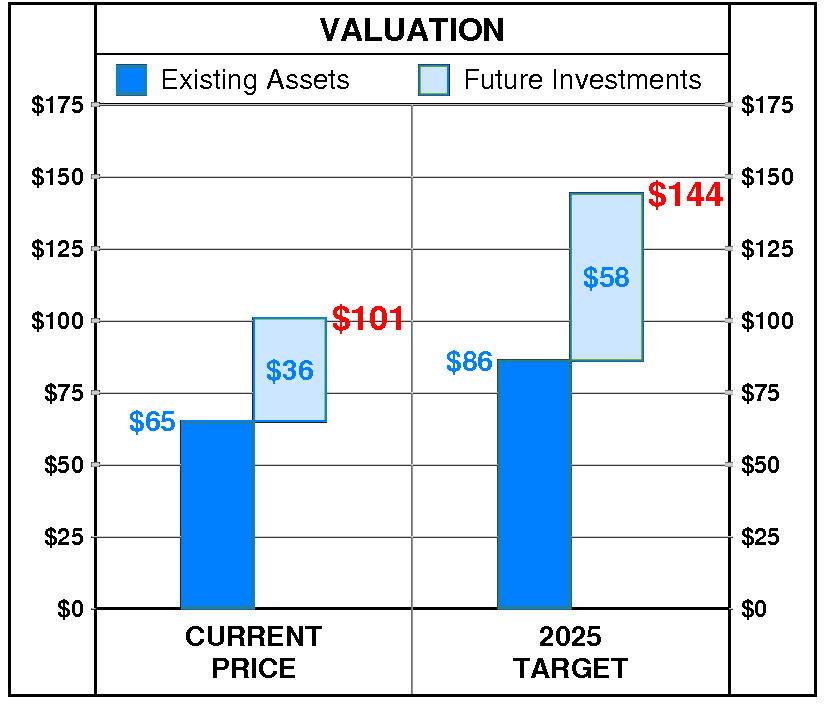
At Cooper’s current price of $100.82, investors are placing a positive value of $36 on its future investments. This view is consistent with the company’s most recent performance that reflected a growth rate of 19.0% per year, and a return on equity of 6.5% versus a cost of equity of 4.6%.
PTR’s 2025 Price Target of $144 is based on these forecasts and reflects an estimated value of existing assets of $86 and a value of future investments of $58.

Be the first to comment